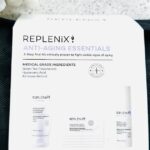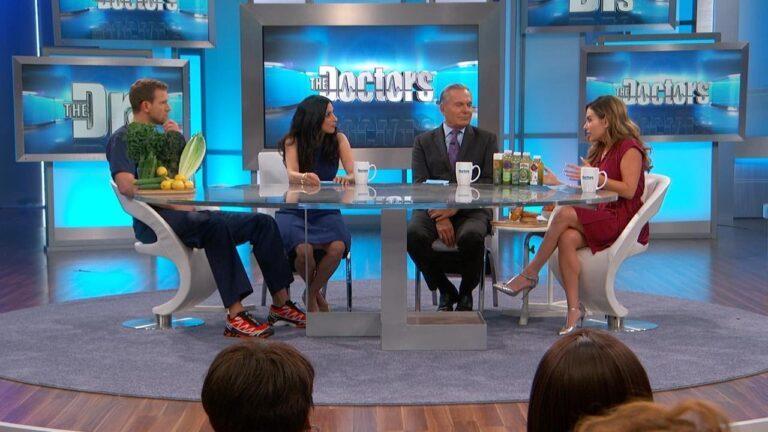In the Spirit of Thanksgiving By Russell K. King, HHRA Executive Director Thanksgiving is just hours away, and the spirit of gratitude envelopes me like a familiar old quilt on a cold November night. As I wrap the comforter of gratefulness around me, I contemplate its myriad threads woven into the pattern of my life. They include, of course, the harvest of Earth’s gifts and the deep meanings and joys I glean from the love of my family and friends, but this year there is a new thread in the pattern: the HHRA. Perhaps it’s more accurate to say there are many HHRA threads that inspire gratitude. A human cause. Over the course of my career in nonprofit leadership and consulting, I’ve had the honor of advancing many worthy causes. What I’ve learned along the way is that the more directly a cause serves human needs and enhances human wellbeing, the greater is the intrinsic reward of giving it my all. The work of the HHRA is about public health, maternal health, and child health–inspiring a rather sacred sort of gratitude. Leadership. Another observation I’ve made over the years of helping nonprofits is that high-quality leadership, whether found or cultivated, is rare. The HHRA has a trio of leaders who are committed to sound science: Tom Green, chair of the HHRA Board of Directors, Dr. David Haas, who leads our Heartland Study, and Dr. Phil Landrigan, chair of our Science Advisory Board. Their insistence that we “not get ahead of the data” and that we “are agnostic about the outcomes” of our research is the kind of leadership that preserves the integrity of our work. That integrity is vital to acceptance of our outcomes and recommendations. In turn, that acceptance is essential to our ability to enhance public health through changes in policy, practice, and public perception. I’m grateful for such leadership at the HHRA because it is both uncommon and essential. A talented team. Almost any part of life is enhanced by the blessing of working with a great team, and the HHRA is so blessed. Paul Hartnett and Grace Koch distinguish themselves not merely by being exceptionally smart, talented, and industrious, but also by being exceptionally good people of honesty, wit, and warmth. Funding support. Of course, this cornucopia of would not exist without the courage, wisdom, and generosity of our grantors and donors. They, too, inspire great gratitude in this season of Thanksgiving. You can help, too. To the entire HHRA family, I offer my thanks. May you, too, find many reasons to be grateful, and may that feeling linger long in our hearts. Together, may we hear the harmony of the song of seasons and the voice of hope in change. May we know ourselves and each other as leaves upon the tree of life, even as we bud and grow and fall. And may we wee the beauty in it all. The Role of the Heartland Study and HHRA in the Global Glyphosate Study By Philip Landrigan, MD, Chair, HHRA Science Advisory Committee As the design of the five-year Global Glyphosate Study (GGS) came into focus in 2018-2019, I served as chair of the Ramazzini Institute (RI) Science Advisory Committee. Melissa Perry, MD, then the co-primary investigator the Heartland Study, served with me on this committee. During those early meetings with RI scientists, we learned that the original design of the GGS would have included only two treatment groups: one fed pure glyphosate, and a second fed Roundup BioFlow, the new GBH formulation containing quaternary ammonium surfactants that is now used in Europe. Roundup BioFlow replaced the POEA-surfactant based Roundup brands that were banned by the EU in 2016 over human-health concerns. As originally designed by the RI, the GGS would have been of limited relevance in the US. Over the last 50 years most applicators and farm workers in the US, and in most other countries outside of the EU, have been exposed to a formulated GBH containing POEA-based surfactants, such as Ranger Pro. In response, Dr. Perry and I suggested to RI colleagues that they should add Ranger Pro to the GGS. The RI scientists said they could do so, but that additional funding would be needed to cover the added cost. The Heartland Study Management Team requested a budget from the RI that called for payment of about $950k over five years. The HS Management Team concluded that the scientific and regulatory value of the GGS in the US, and indeed worldwide, would be markedly enhanced if the GGS included a second POEA-based formulation, such as Ranger Pro. The HS MT therefore agreed to provide the requested funding to the RI on the condition that the funding required to meet the RI payment schedule would not come at the expense of sustaining planned Heartland Study clinical research activities. In mid-2020, the Heartland Health Research Alliance (HHRA) was incorporated and took over governance, administrative functions, and fundraising supporting the Heartland Study. By the end of 2020, HHRA had also taken over management of all then-existing Heartland Study contracts, agreements, staffing and consultant contracts, and fundraising, including all activities arising from the HHRA-RI partnership. Looking back, the decision by the HSMT to cover the costs of the added GGS treatment group was a risky one, which increased the challenges inherent in concurrently funding both the Heartland Study and the Ranger Pro feeding groups in the GGS. However, the addition of the RangerPro treatment group has already paid off. It has provided valuable information that would not otherwise be available. Most importantly, it has shown that RangerPro and other POEA-based GBH formulations are among those most likely to cause leukemia Going forward, the RangerPro exposure groups will help resolve critical questions on whether and how exposures to glyphosate or GBHs might be contributing to reproductive problems, birth defects, and developmental anomalies, as well as cancer and other chronic metabolic diseases. Given that glyphosate-based herbicides remain by far the most heavily applied pesticides in the US and globally, with well over three-quarters of humankind exposed on a near-daily basis, time is of the essence in seeking clarity on the adverse health outcomes stemming from exposure to this herbicide. New Study in Rats Establishes Strong Link Between Roundup Exposure and Early Onset Leukemia By Philip Landrigan, MD, Chair, HHRA Science Advisory Committee The Ramazzini Institute (RI) is concluding its five-year Global Glyphosate Study (GGS), the most detailed independent study ever conducted on the toxicity of glyphosate and glyphosate-based herbicides (GBHs). The study integrates three parts: a two-year cancer bioassay in rats; a two-generation rat reproduction study, and a full battery of in vitro and in vivo genotoxicity assays. The study examines three forms of glyphosate: pure glyphosate; Roundup BioFlow, a GBH form used in the EU; and Roundup RangerPro, a GBH heavily used in the USA. Each form was administered to the rats via drinking water at three dose levels – 0.5, 5.0 and 50 mg/kg/day. These exposure levels are generally considered safe by regulators. Exposures began in prenatal life. There was also a control group not exposed to any glyphosate. A full set of FAQs describes design features and study goals, and the results of GGS pilot studies (need for independent research, study design and endpoints, and impacts on the microbiome). Three unique features of the Ramazzini Institute’s Global Glyphosate Study distinguish it from all previous studies: It studies real-life exposures:No previously published long-term carcinogenicity or multi-generational lab studies have examined glyphosate’s toxicity at real-life exposure levels generally considered safe. It is comprehensive and independent:Hundreds of studies have been carried out on glyphosate by both the pesticide industry and independent scientists using high doses over long-term periods. None, however, have been both comprehensive (covering long-term toxicity, carcinogenicity and multi-generational effects) and independent of the pesticide manufacturing industry. It examines whether Glyphosate is an endocrine disruptor:The GGS previously published a pilot study showing endocrine and reproductive toxicity in rats at glyphosate doses currently considered safe by US regulatory agencies. These findings were later confirmed in a human population of mothers and newborns exposed to glyphosate during pregnancy. Instead of testing maximum tolerated dose levels, as in the case of glyphosate cancer bioassays conducted by GBH registrants, the GGS is assessing the health effects of doses that are much closer to real-world exposure levels. The GGS dose levels include the EU Acceptable Daily Intake level of 0.5 mg/kg/day, 5 mg/kg/day (10-X the EU ADI), and the EU No Observable Adverse Effect Level (NOAEL) of 50 mg/kg/day. These doses are 100-fold to 1,000-fold lower than the doses in registrant-commissioned toxicology studies. First Key Findings Released On Oct. 25, 2023, the RI released the first major findings from the GGS rat cancer bioassay. The press release states: “A multi-institutional international toxicological study has found that low doses of glyphosate-based herbicides cause leukemia in rats. Importantly, half of the leukemia deaths identified in the study groups occurred at an early age.” No rats in the unexposed control group died of leukemia. Four leukemia deaths were recorded in the rats exposed to pure glyphosate. Three leukemia deaths occurred in the rats exposed to Roundup BioFlow. Seven leukemia deaths occurred in the rats exposed to Ranger Pro. In the formulated GBH treatment groups, the higher the glyphosate dose, the greater the number of leukemia deaths. In its presentation of results, the RI team stressed that: “An additional very important finding is that about half of the leukemias deaths seen in the glyphosate and glyphosate-based herbicides groups occurred at less than one year of age. In previous studies, no case of leukemia was observed in the first year of age in more than 1600 historical controls in carcinogenicity studies conducted by either the Ramazzini Institute or the US National Toxicology Program (NTP).” The RI team still has substantial work ahead to finish analyzing all of the tissues collected in the three legs of the GGS. They must conduct careful statistical analyses to ferret out statistically significant links between glyphosate or GBH exposures and markers of adverse health effects One of their most important challenges – and opportunities – is to combine insights from each of the three parts of the GGS into a cohesive, consistent set of findings that identify how exposures to glyphosate and GBHs can impair health, as well as the mechanisms leading to reproductive problems or chronic disease. The time it will take the RI to complete the core scientific papers reporting the results of the GGS will depend on their success in raising additional funding. Once the first round of papers is complete in 2024, the RI looks forward to pursuing several additional, collaborative research projects to explore glyphosate/GBH roles in epigenetic change, impairment of the microbiome, and impacts on children’s development and metabolic disease. The addition of the RangerPro treatment group has provided valuable information that would not otherwise be available and shown that RangerPro and other POEA-based GBH formulations are among those most likely to cause leukemia. The RangerPro exposure groups may help resolve critical questions on whether and how exposures to glyphosate or GBHs might be contributing to reproductive problems, birth defects, and developmental anomalies, as well as cancer and other chronic metabolic diseases. Given that glyphosate-based herbicides remain by far the most heavily applied pesticides in the US and globally, with well over three-quarters of humankind exposed on a near-daily basis, time is of the essence in seeking clarity on the adverse health outcomes stemming from exposure to this herbicide. Findings from study of rats spotlights the importance of the Heartland Study By Russell K. King, HHRA Executive Director A multi-institutional international toxicological study has found that low doses of glyphosate-based herbicides cause leukemia in rats, according to a press release issued October 25, 2023, by the Ramazzini Institute in Italy. Half of the leukemia deaths identified in the study groups occurred in rats younger than a year old. There are those, of course, who have an interest in discounting science that suggests glyphosate in food may cause health problems for those who ingest it, and the easiest and most common way to do that is by dismissing the study as being about rats, not people. That shines a bright light on the Heartland Study, because what we’re investigating is precisely that: The human health affects, if any, of ingesting food treated with herbicides, including glyphosate. Of course, any dismissal of rat studies as insignificant for humans is disingenuous and often intended to mislead people who have low science literacy. Just 28% of Americans are scientifically literate. I’ve written before about the difficulties created by people undermining science for their own purposes. I’ll be happily surprised if the Ramazzini study does not encounter those difficulties. The fact is, laboratory rat studies have made invaluable contributions to understanding and improving human health–from cardiovascular medicine, to neural regeneration, addiction treatment, wound healing, major depressive disorder, diabetes, transplantation, behavioral problems, space motion sickness, and more. Rats have also been widely used to test drug efficacy and safety. The success found through experiments using lab rats is thanks to the robust overlap among the physiological, anatomical, and genetic between rodents and humans. These similarities are key in being able to compare the results from rat experiments to the potential effects of the same treatment or condition in human beings. So, yes, the results of this enormous study of rats is an important signpost directing us to examine the health affects of glyphosate in humans. And that’s exactly what we’re doing. You can help support our vital research. Please do. Asking for Your Help By Russell K. King, HHRA Executive Director A few weeks ago, I introduced myself and provided a brief overview of my approach to the HHRA. I let you know there’d come a day when I’d be asking for your help. Today’s the day. Competition for charitable dollars is brutal. If you exclude the famous schools that receive huge sums from wealthy alumni, the list of charities receiving the most support in the past few years is focused on direct human needs—food banks, housing, etc.—as a response to the pandemic. We can expect donors to expand the range of the causes they support in the coming years, and we must position HHRA to be an attractive option for them. As an emerging nonprofit, the HHRA has little name recognition. Telling our story to the people most likely to support us will be essential—but what is the story? Put another way, what do donors want to see in a nonprofit and what will they see when they look at the HHRA? Donors want to feel good about supporting our cause. They will ask themselves: Is this cause is worthy of my gift, and can the HHRA be trusted to spend the money on that cause? With scientific and medical research, the perceived integrity of the organization is the perceived integrity of the research. They will also ask: Does the HHRA have an advocacy agenda or a financial backer it’s trying to support? Either perception would diminish faith in both the HHRA and its research outcomes. The HHRA is ready for that donor inquiry. Yes, our cause of preserving maternal and child health via unique research is worthy. Yes, we can be trusted to use their gifts for that cause. No, we have nothing we’re trying to push or prove—we don’t care what the research reveals, we just want to make sure the questions are asked and answered. No, we serve no financial or business cause. We’re simply using science to help keep people healthy. Here’s how you can help. First, donate then ask friends and family to do the same. Are you on one or more social media platform? Ask friends and followers to give and send them our link. Second, help us identify potential sources of larger gifts. Might your alma mater, hospital, university, professional association, medical society, or faith community give? Are there foundations, organizations, or wealthy individuals you know of that might support research into women’s health, children’s health, or food safety? Let us know. This is one of those rare chances for us to genuinely come together as a community and make a difference in people’s lives. Let’s make the most of it. From the British Food Journal Findings show that perceived distributional, procedural and interactional fairness mutually interact with the perceived trustworthiness of business partners and that both contribute to building personal, organisational and institutional trust. Qualitative data support the conceptual model and show that trust is a valuable relational resource that affects relationship quality and the willingness to collaborate and to take risks in times of uncertainty. More here.
This content was originally published here.



















